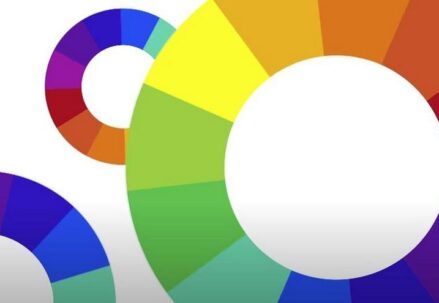Unity, a crux notion in the realm of design, is a cornerstone principle. It embodies the adhesive dynamic that merges distinct components within a design, bestowing an ambiance of harmony and wholeness. The doctrine of unity wields the might to steer those who view or utilize it, facilitating their comprehension of the design as a cohesive entity rather than disjoined segments.
Examining exemplars of unity in design principles can unravel enlightening insights into this concept. For instance, echoing coloration patterns shape or texture throughout various elements could engender feelings of unity. A steady font style in graphic artistry or homogenous material usage in architectural plans can render the design harmoniously unified. Above all else, unity doesn’t denote tedium; indeed it often collaborates with diversity- counterbalancing its excesses to avoid visual mayhem. The ultimate aim is furnishing the design with an exclusive overarching identity accentuating its core purpose and message.
The Importance of Unity in Graphic Design

In the bewildering sphere of graphic design, the essence of Unity principle weaves its intricate threads around the notion that all components in a design are compelled to function symbiotically, crafting an integrated and harmonious entity. This enigmatic concept whispers subtly about how every aspect of a design – be it hues, forms, textures or typography – should hum with a resonating consistency and harmony.
Deciphering this elusive guiding light is indispensable for every graphic designer who navigates these waters. It serves as their north star towards amplifying not just the comprehensibility but also the aesthetic allure of their creation. The outcome? A visual narrative that teases curiosity while enrapturing its spectators.
When one delves into the labyrinthine world of graphic designing, they soon realize there’s no overstating this rule’s importance. A pinch too much liberty may result in designs devoid unity — leading to chaos that can birth confusion and misinterpretation like some unholy offspring.
On contrastingly placid waters though, when designers masterfully wield this principle creating tapestries steeped in unity; clarity emerges from chaos. Their work becomes a beacon transmitting its intended message loud and clear — fostering an unbreakable bond with those who behold it. In orchestrating such visual symphonies marked by unwavering rhythm and balance; they command viewer attention — captivating them effortlessly.
To further comprehend the significance of unity in graphic design, let’s delve into its benefits:
- Unity brings coherence: A unified design ensures that all elements are working together to tell a cohesive story. This makes it easier for viewers to understand and interpret the message being conveyed.
- It enhances visual appeal: When every component of a design harmoniously works together, it creates an aesthetically pleasing experience for the viewer. The result is a visually engaging piece that stands out from the crowd.
- Unity fosters emotional connection: By creating designs with unity, designers can evoke specific emotions and reactions from their audience. This helps in forming deeper connections between brands and their target market.
- It improves readability and comprehension: A well-unified design aids in better readability by guiding viewers’ eyes across different elements smoothly. This leads to improved comprehension of the overall content.
In conclusion, mastering unity in graphic designing allows creators to craft compelling narratives that not only captivate audiences but also communicate messages effectively — making it an indispensable principle within this creative realm.
The importance of unity becomes even more pronounced when we consider these potential pitfalls if overlooked:
- Disjointed storytelling: Without unity, your design could become disjointed leading to confusion amongst viewers about what your brand or product stands for.
- Visual clutter: Lack of harmony among elements can create visual clutter which distracts rather than attracts attention — undermining your communication goals significantly.
- Dilution of brand identity: Inconsistent use of colors, fonts or imagery might dilute your brand’s identity as they fail to resonate with each other cohesively on various platforms
Therefore, understanding and implementing the principle of unity should be at heart while crafting any piece within graphic designing sphere; ensuring effective communication while enhancing aesthetic allure.
Exploring Examples of Unity in Various Design Fields
Perusing the multifarious realms of design, we encounter striking exemplifications of unity principles at work. Take graphic design for instance – a seamless visual rhythm brought about by a harmonious amalgamation of fonts, colour schemes and imagery embodies the essence of unity. Such coherence guides one’s gaze smoothly through the canvas, hence leading to an immersive user experience. It is this symbiotic alignment among various elements that facilitates intuitive comprehension of the intended message.
Unity as a concept isn’t confined to just graphic design but extends its tendrils into architectural designs too where it manifests itself in the form of harmony between constructed edifices and their environmental surroundings. This equilibrium is birthed from mirroring shapes or recurrent patterns making it seem as if the structure was naturally part of its ambiance all along.
Not to be left behind, interior designing also furnishes compelling instances wherein unity reigns supreme; congruent furniture pieces, coordinated hue palettes and calculated décor placements together conjure up an atmosphere reeking with consonance within any given space.
Pondering upon these myriad real-world illustrations inevitably leads us down a path riddled with queries: What are some vivid examples which encapsulate fundamental principles at play in designing? Without any shred of doubt, Unity emerges as that irrepressible principle seeping across diverse disciplines underpinning a uniform yet exhilarating aesthetic experience.
The Role of Unity in Web Design
In the sphere of web design, akin to its counterparts in other design domains, unity operates as a bedrock principle that injects coherence, consonance, and sequence into the components populating a webpage. This concept of unity essentially demystifies the query – what is unity in designs? It’s an indispensable aspect when crafting a website that resonates visually while being effective. Often manifested through alignment, closeness, repetition, and opposition – a unified web design assures each element on the stage feels deliberately positioned and interlinked.
Through deploying unity as their toolset, web designers can intertwine separate elements into an integrated and captivating virtual experience. A proficiently unified site fluently directs users’ gazes and focus; guiding them intuitively across content terrain. The lack thereof could transfigure a site into chaos and disconnection; sabotaging user experience due to mismatched intent and aesthetics. On the flip side: websites where everything knits together harmoniously don’t just project professionalism but also propel user engagement — an attestation to the expansive reach and sway of unity within web design.
Achieving Unity in Interior Design: Key Considerations
The realm of interior design dances to the rhythm of one fundamental principle, unity. Unity in this context is a symphony, a marriage of harmony and wholeness that unfurls when every element of a design synchronizes seamlessly. A prime instance showcasing unity as an epitome of harmony is the strategic application of color schemes across spaces within a home. The deliberate decision to drape rooms with one hue or perhaps blending white, beige, and brown– uniformly throughout various rooms infuses consistency, continuity, and equilibrium.
But let’s not pigeonhole unity in interior design solely to colors; it stretches its arms towards furniture selection, lighting arrangements even down to accessories detailings. For example, echoing certain materials or shapes in furnishings across the house can also be instrumental in achieving this sense of cohesion. Imagine placing circular wooden tables at significant spots all over your house – dining room gets a round table; living area welcomes a round coffee table while bedrooms host circular bedside stands – such deliberate arrangement underlines how unity can be manifested effectively. It’s akin to conducting an orchestra where each corner becomes part of harmonious visual melody that resonates beyond just aesthetics.
How Unity Contributes to Effective Logo Design
The impact of unity on the craft of logo design is beyond any measure of doubt. It’s the glue that binds a logo’s overall coherence, instilling it with a compelling sense of wholeness which ultimately governs its power to deliver an intended message. Unity takes center stage in carving out logos that are not only visually captivating but also echo the brand’s identity.
Harnessing elements that strike a chord with one another in form, color, and style is key for designers aiming to weave unity into their creations. This results in logos unforgettable in their appeal and impactful through their presence. The utilization of unity serves as an anchor; maintaining consistency, fending off clutter and crafting balance within the contours of a logo’s design. The final masterpiece? A logo pulsating with resonance for its target audience while effectively voicing out the brand’s core beliefs.
The Influence of Unity in Fashion Design
In the labyrinthine world of fashion design, unity weaves a significant thread, amalgamating disparate elements into an aesthetically pleasing and seamless tapestry. On their own, these elements might not command much visual gravitas, but when orchestrated in a well-considered design symphony, they can compose a magnetically compelling ensemble. This principle of unity harbors the potential to redefine the frontiers of fashion, steering designers towards crafting collections that are harmonious yet visually stimulating as well as innovative.
Exemplary demonstrations of this metamorphic prowess wielded by unity in fashion design can be seen in the opuses of celebrated designers worldwide. Their triumphant collections typically manifest robust coherence through persistent utilization of preferred materials, recurring design motifs and harmonized color palettes. This results in an iconic aesthetic unique to each designer’s creative identity. Therefore, it could be asserted that ‘unity within diversity’ serves as an underlying mantra for fashion designing where artists ingeniously fuse diverse components into one coherent entity that is both trend-setting and eye-catching.
FAQs
The principle of unity in design encapsulates a visual coherence or singularity, arising from an adept fusion of various elements within a design. This lends to an overall sense of orderliness, equilibrium, and consonance across the composition.
Unity stands as a cornerstone for graphic design because it guarantees that all components operate cohesively. It nurtures an atmosphere of connection and uniformity which elevates both the aesthetic charm and potency of the final output.
Instances showcasing unity are peppered throughout diverse domains of designing. Take web designs – uniformity is procured through color schemes, fonts, and layouts that echo each other’s essence. In interior decor scenarios, recurring motifs or color palettes might exemplify unified aesthetics while fashion styling unifies disparate pieces via harmonizing fabric types, shades, and patterns.
Within web designing realms, unity plays its part by curating interfaces that are both coherent and user-friendly. A consistent application across all facets – be it font styles or image placements — amplifies usability along with refining overall audience engagement.
Crafting a unified ambiance within interior spaces calls for meticulous consideration towards factors like hue selection, texture incorporation alongside line orientation, spatial arrangement & shape utilization. These collectively orchestrated bring forth balanced aesthetics while repetition or focal points further enhance this aspect.
The precept behind achieving cohesion among visuals — shapes & hues alike—in logo curation is ensuring they work together seamlessly to mirror brand identity effectively on canvas; thereby making logos more memorable & easily identifiable by viewers.
Within fashion design, achieving unity translates to a well-composed and coherent look. This could be accomplished through repetitive use of color schemes, textures or patterns, and shapes. When a design portrays unity, it is often more aesthetically appealing and better conveys the designer’s vision.




